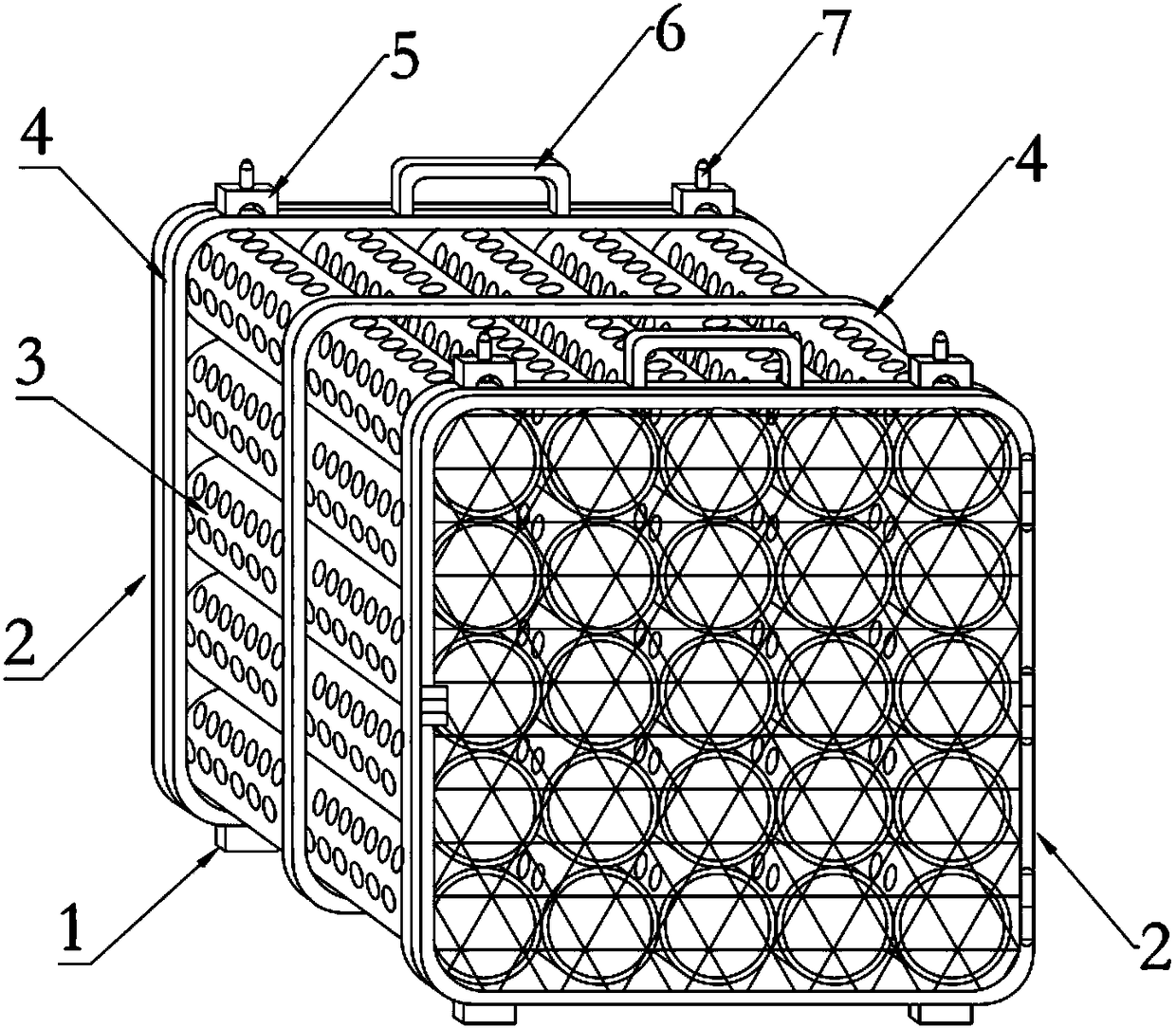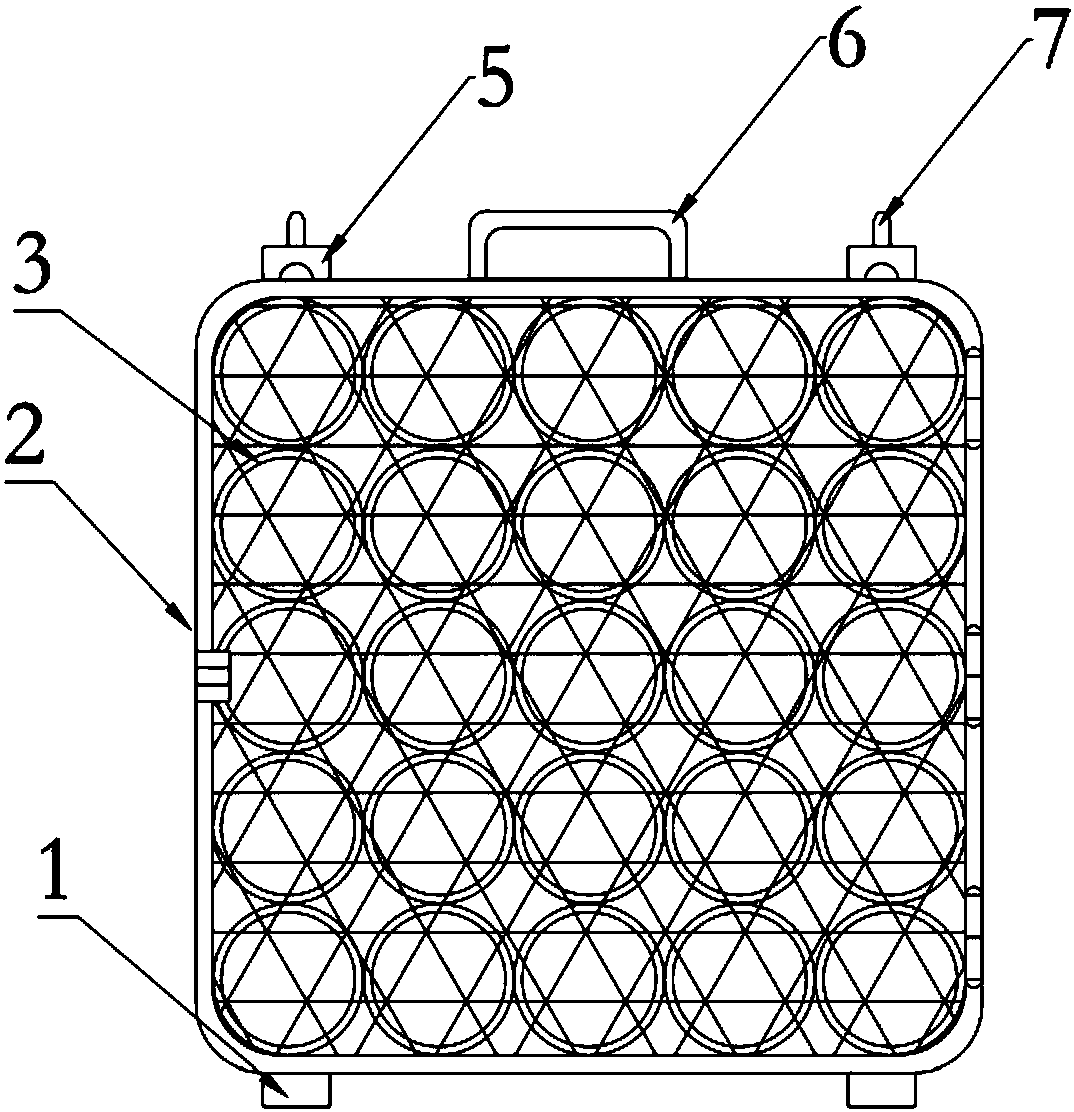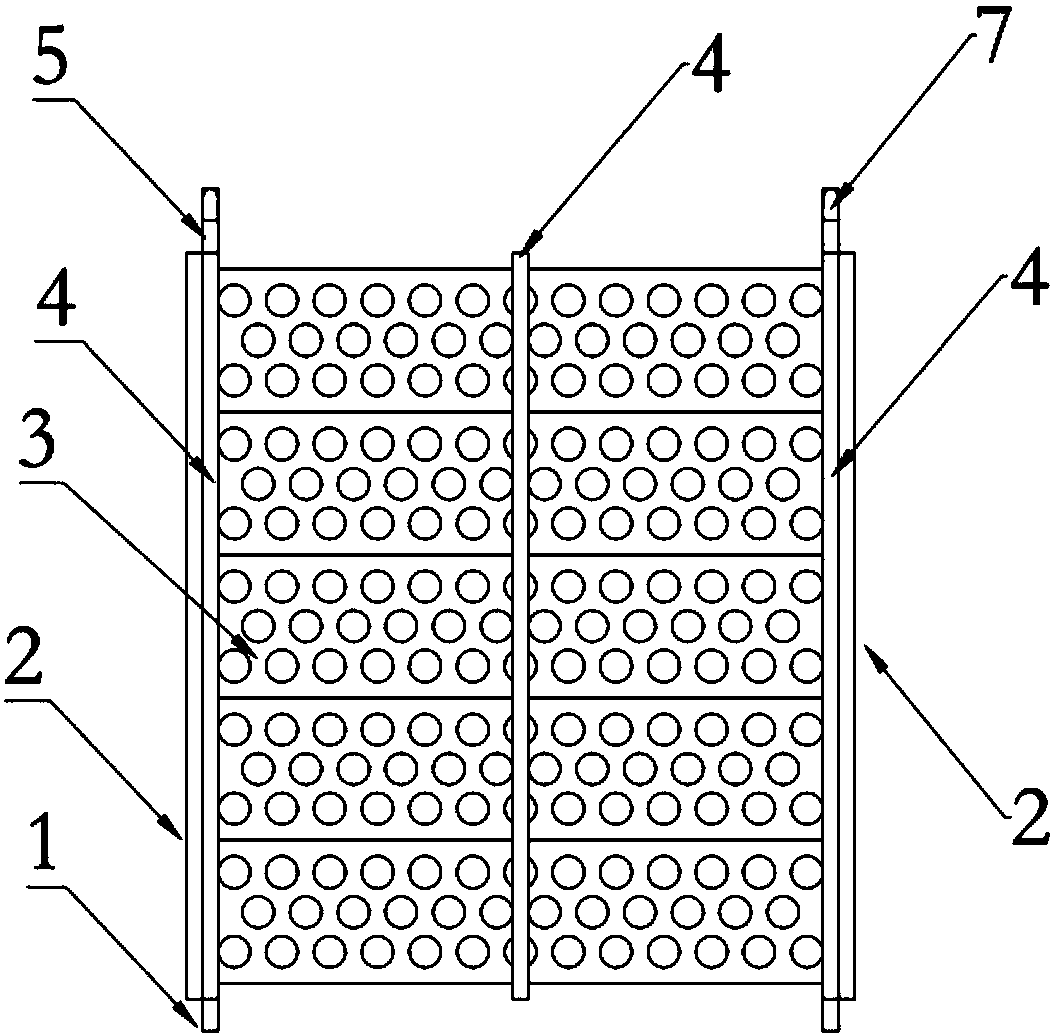Device for temporary rearing and transporting of lobsters
A technology of lobster and center position, which is applied in application, fish farming, animal husbandry, etc., can solve problems such as fishing, point counting, cumbersome packaging process, backward seafood temporary breeding technology and conditions, and affect the speed of lobster shipment, so as to achieve saving The effects of logistics transit time, reduction of temporary feeding mortality, convenience of manual extraction and automatic extraction
- Summary
- Abstract
- Description
- Claims
- Application Information
AI Technical Summary
Problems solved by technology
Method used
Image
Examples
Embodiment Construction
[0034] In order to make the purpose, technical solutions and advantages of the embodiments of the present invention clearer, the technical solutions in the embodiments of the present invention will be clearly and completely described below in conjunction with the drawings in the embodiments of the present invention. Obviously, the described embodiments It is a part of embodiments of the present invention, but not all embodiments. Based on the embodiments of the present invention, all other embodiments obtained by persons of ordinary skill in the art without making creative efforts belong to the protection scope of the present invention.
[0035] see Figure 1 to Figure 8 The structure schematic diagram of a preferred embodiment of the present invention shown in, a kind of device that is used for lobster holding and transshipment temporarily, is made up of temporarily raising cage 3 and front and rear two anti-escape doors 2; Said temporarily raising cage 3 is composed of a te...
PUM
 Login to View More
Login to View More Abstract
Description
Claims
Application Information
 Login to View More
Login to View More - R&D
- Intellectual Property
- Life Sciences
- Materials
- Tech Scout
- Unparalleled Data Quality
- Higher Quality Content
- 60% Fewer Hallucinations
Browse by: Latest US Patents, China's latest patents, Technical Efficacy Thesaurus, Application Domain, Technology Topic, Popular Technical Reports.
© 2025 PatSnap. All rights reserved.Legal|Privacy policy|Modern Slavery Act Transparency Statement|Sitemap|About US| Contact US: help@patsnap.com



